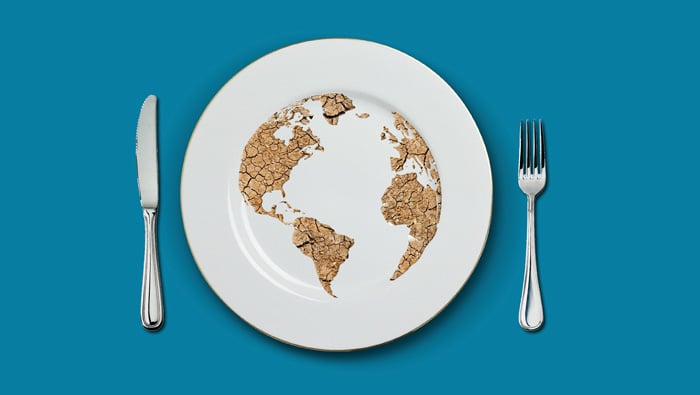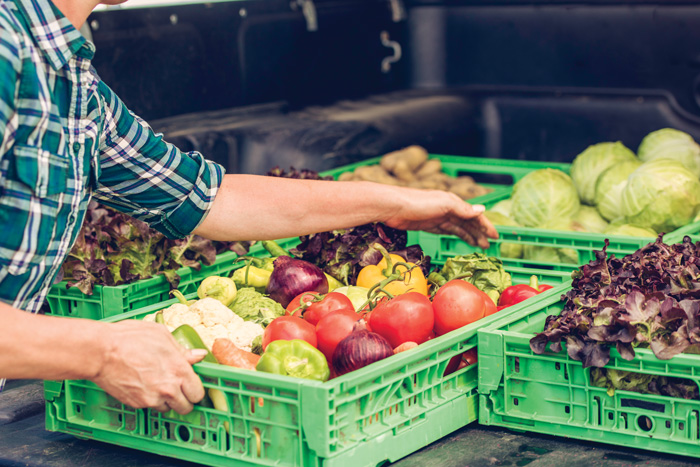Alt Protein Makers to Cut Back on Capital Spending, IFT White Paper Addresses Food Waste
OMNIVORE
INDUSTRY
Alt-protein makers to cut back on capital spending
Manufacturers of alternative proteins have seen a 66% increase in sales volume since 2021, but despite that sales growth they plan to spend nearly 50% less on capital projects, according to the 2023 Alternative Proteins Report from CRB, an architecture, engineering, construction, and consulting firm.
Tony Moses, director of product innovation at CRB, said he was surprised to see companies “right-sizing” their spending.
“Two years ago, we saw what we thought would be a large amount of capital spending, about $100 million and above,” he explained in an interview with Food Technology. “We’ve seen that reduced to the $50 million to $100 million range.
“And then we’ve seen more companies looking at spending on new equipment and new lines,” Moses continued. “So we’re seeing the industry is still spending capital dollars, but in our opinion, they’re just right-sizing towards their production needs instead of speculative investments.”
The firm interviewed over 150 leaders in the alternative protein space to learn more about their business strategies, regulatory challenges, and sustainability needs. The report comes two years after its predecessor, showing how the industry has changed its priorities in that time.
The report identifies six key areas leading the movement toward alternative proteins, including cultivated meat, fermentation-derived proteins, plant- and mycelium-based meat, plant-based dairy, sustainability efforts, and regulatory needs. Each of these areas of the report includes statistics, challenges, and recommendations to ensure best performance as consumer interest in alternative protein continues to grow.
Looking toward the future, Moses believes that equipment innovation will be the next area of growth within this space as companies solidify their scientific processes.
“For example, for cultivated meat and precision fermentation and mycelium, we’ve been able to use bioreactors that are traditionally used in the pharmaceutical industry, and on the plant-based side, extruders are not typically designed to be high-throughput pieces of equipment,” he said. “So I think that we’ll see the attention paid to that and some evolution in that space as well.”
Highlights of the CRB analysis for key categories include the following:
- Cultivated Meat: Investment in the cultivated meat industry increased from approximately $60 million to $1 billion over the past three years.
- Fermentation-Derived Proteins: 56% of manufacturers in this space surveyed said they plan to spend capital on food safety upgrades in the next two years.
- Plant- and Mycelium-Based Meat: More than one in three companies surveyed reported planning to add plant- and mycelium-based products to their portfolio.
- Plant-Based Dairy: Producers in this space have a 28% annual growth target over the next two years.
- Sustainability: 55% of companies surveyed currently have sustainability budgets.
- Regulatory Challenges: 54% of companies surveyed have an in-house quality control manager in charge of regulatory compliance.
FOOD SECURITY
Report identifies food security strategies
Growth in humanitarian funding for food security efforts has slowed since 2017, according to a new report from the Rocke-feller Foundation.
The report, titled Anticipate and Localize: Leveraging Humanitarian Funding to Create More Sustainable Food Systems, outlines the current challenges in the global food system and how humanitarian efforts can ensure people are getting the proper nutrition they need. The report identifies “three Cs” that contributed to the current crisis: conflict, COVID-19, and climate change.
While humanitarian funding reached an all-time high in 2021 at $31.3 billion, growth in funding has stalled. Funding typically increased by 10% each year between 2012 and 2017, but that number decreased to 2.6% in 2021. Meanwhile, the rate of global food insecurity continues to grow, as 29% of the world’s population was food insecure in 2021, an increase from 21% in 2014.
The three largest donors, the United States, Germany, and other European Union countries, accounted for 59% of all public humanitarian funding in 2021. Private donations reached $6.4 billion in 2021.
The Rockefeller Foundation identifies four key recommendations to use humanitarian funding to strengthen food security efforts: fund anticipation, collaboration across disciplines, fund localization, and investment in food security. According to The Start Network, a network of over 80 humanitarian agencies around the world, 20% of humanitarian crises are highly predictable, but less than 1% of funding goes to anticipatory action. The report suggests that donors increase their funding to resilience efforts and local organizations so that these crises are met when they begin.
“In essence, to get food security right means getting many other things right as well: long-term resilience, true equity, gender equality, inclusion, localization, and more,” the report states.
RESEARCH
How consumers view plant-based fish
Consumers in Atlantic Canada are willing to try plant-based fish and seafood but feel concerned that it won’t mimic the taste and texture of real fish, according to a new study published in the Journal of Food Science.
The study, which comes from the School of Nutrition and Dietetics at Acadia University, was conducted with 183 participants living in Atlantic Canada. Overall, 71% of participants stated that they consumed fish between one and 10 times per month, and 9% said that they don’t eat fish. The majority of respondents (86%) reported having limited to no knowledge of plant-based fish.
Study participants were asked to rate their attitudes toward plant-based seafood on a scale of from one to five, including how healthy, ethical, and environmentally friendly these alternatives are. On average, respondents believed plant-based seafood was a healthy and ethical alternative to traditional fish. Additionally, the majority thought that plant-based fish and seafood would not taste the same as regular fish and they would not be willing to spend more money on these alternatives.
In addition to the overall statistics, the study analyzed responses from those who work in the fishing industry and those with high food neophobic scores, or those averse to trying novel food products. Participants who worked in the fishing industry were less likely to think that plant-based seafood is ethical and more likely to categorize plant-based fish as “disgusting.” Additionally, respondents with high food neophobic scores were less likely to spend money on plant-based fish.
The study included an open-ended comment section for participants to further express their opinions. From these comments, researchers identified six common themes: environmental concerns, taste, preference for traditional fish, positive thoughts, texture, and uncertainty. Sustainability was the most common theme in the comments, with 50% of respondents mentioning sustainability or environmental concerns.
The researchers believe that further study is needed to compare attitudes toward plant-based fish in different regions of Canada, as well as between rural and urban communities.
FOOD WASTE
IFT white paper addresses food waste
Food loss and waste is an environmental, societal, and economic problem. Approximately one third of food produced globally is never consumed, contributing to over a billion tons of food wasted each year, costing the global economy almost a trillion dollars annually. Meanwhile, one in nine people worldwide is living in hunger. Food security is a global priority that is dependent on a sustainable food system that can address growing demand amidst resource depletion.
Please visit https://content.ift.org/food-loss-white-paper to read IFT’s white paper, Food Science and Technology Solutions to Improve Food and Nutrition Security: Reducing Food Loss and Valorizing Food Processing Side Streams.
COMMUNITY
Meet the leader: Patrice Lyon
Patrice Lyon is a private consultant who focuses on regulatory and research and development areas. She received her bachelor’s degree in food science with minors in chemistry and biochemistry from Washington State University and graduate certificates in bakery science and food safety and defense from Kansas State University. She is involved with the Carbohydrate and Dairy Foods Divisions of IFT as well as the Women’s Resource Group and the New England Section.
Which IFT core value resonates the most with you?
Passion resonates the most with me. I’m passionate about the science of food. I’m committed to find solutions to food challenges facing humanity.
What is your favorite thing about being an IFT member?
My favorite thing is developing relationships with people from different disciplines, backgrounds, and world areas to foster new and exciting ways to think, collaborate, and solve problems.
If you had to eat one food for the rest of your life, what would it be?
One food I can eat for the rest of my life is nachos. You can add a variety of toppings and never get bored with it.










